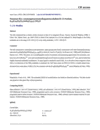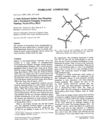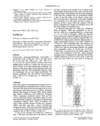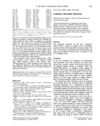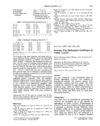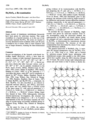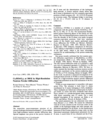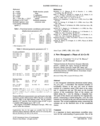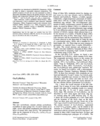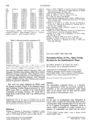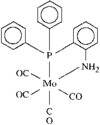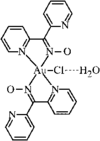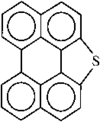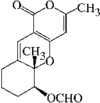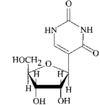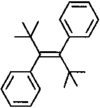issue contents
November 1997 issue

Cover illustration: Bis[1,2(eta5)-cyclopentadienyl]-di-mu-ethylselenolato-di-mu-selenido-dimolybdenum(IV)(Mo-Mo), see Thöne, Jones and Laube, pages 1539-1542. Displacement ellipsoids are shown at the 75% probability level and H atoms have been omitted for clarity.
cif-access (inorganic compounds)
Download citation


Download citation


The centrosymmetric [Co4(H2O)2(AsW9O34)2]10- anion in this compound contains two [α-B-AsW9O34]9− units bonded to a central set of four coplanar Co2+ ions, two of which also carry a water ligand. It is closely isostructural with the corresponding anions containing (Zn,As), (Co,P) and (Mn,P) [J. Chem. Soc. Dalton Trans. (1986), 2699-2705; Inorg. Chem. (1993), 32, 3378-3381].
cif-access (metal-organic compounds)
Download citation


Download citation


Download citation


Download citation


cif-access (organic compounds)
Download citation


Download citation


Download citation


Download citation


Download citation


Download citation


Download citation


Download citation


inorganic compounds
Download citation


Download citation


The semi-condensed tetrahedral zinc phosphate framework in Na6Zn3(PO4)4.3H2O has an unusual structural feature: the tetrahedral atoms form only eight-membered rings, in contrast to the typical six- or four-membered rings commonly found for aluminosilicates or aluminophosphates.
Download citation


Download citation


Cs5Mo21S23 is isostructral with Cs5Mo21Se23. The Mo–S framework comprises Mo21S23 cluster units sharing their six terminal S atoms. The Cs+ cations are located either between the Mo21S23 cluster units or in channels along the c axis.
Download citation


Download citation


The polymeric structure of CdS2O3.2H2O consists of tightly woven two-dimensional networks interconnected by hydrogen bonds. The Cd2+ environment is octahedral and the thiosulfate ion binds to four different cationic sites, in simple as well as in bridging modes.
Download citation


Download citation


This new polymorph of Co2P2O7 contains CoO6 octahedra and P2O7 groups with an O—P—O angle of 180°. The CoO6 octahedra share edges to form six-membered rings, which are further interconnected to form two-dimensional zigzag sheets parallel to (001). The P2O7 groups link these sheets to form a three-dimensional network.
Download citation


Download citation


Sb2MoO6 has an Aurivillius-type layered structure. The Mo atoms are located in distorted O-atom polyhedra and the Sb atoms have 3+2 coordination.
Download citation


Download citation


The layered structure of Cs3H(SeO4)2 is built from Cs atoms coordinated by O atoms belonging to SeO4 tetrahedra. These tetrahedra are linked into isolated pairs by hydrogen bonds. The Cs atoms and SeO4 tetrahedra form mixed layers alternating with layers containing only Cs atoms.
Download citation


Download citation


This new hexagonal Al–Cr–Ni phase contains six columnar clusters in the unit cell, each of which is formed from two icosahedral clusters.
Download citation


Download citation


Ca3Y2(Si3O9)2 contains triangular Si3O9 silicate rings. Ca and Y atoms are situated between Si3O9 layers and are coordinated by six, seven or eight O atoms of the Si3O9 rings.
Download citation


Download citation


In contrast to previous reports, Zr7Ni10 crystallizes at the stoichiometric composition with a centrosymmetric structure in space group Cmca.
metal-organic compounds
Download citation


Download citation


Download citation


Download citation


Download citation


Download citation


Download citation


Download citation


Download citation


Download citation


Download citation


Download citation


Download citation


Download citation


Download citation


Download citation


Download citation


Download citation


Download citation


Download citation


Download citation


Download citation


Download citation


Download citation


Download citation


Download citation


Download citation


Download citation


Download citation


Download citation


Download citation


Download citation


Download citation


Download citation


Download citation


Download citation


Download citation


Download citation


Download citation


Download citation


Download citation


Download citation


Download citation


Download citation


Download citation


Download citation


Download citation


Download citation


Download citation


Download citation


Download citation


Download citation


Download citation


Download citation


Download citation


Download citation


Download citation


Download citation


Download citation


Download citation


Download citation


Download citation


Download citation


Download citation


Download citation


Download citation


Download citation


Download citation


organic compounds
Download citation


Download citation


Download citation


Download citation


Download citation


Download citation


Download citation


Download citation


Download citation


Download citation


Download citation


Download citation


Download citation


Download citation


Download citation


Download citation


Download citation


Download citation


Download citation


Download citation


Download citation


Download citation


Download citation


Download citation


Download citation


Download citation


Download citation


Download citation


Download citation


Download citation


Download citation


Download citation


Download citation


Download citation


Download citation


Download citation


Download citation


Download citation


Download citation


Download citation


Download citation


Download citation


Download citation


Download citation


Download citation


Download citation


Download citation


Download citation


Download citation


Download citation


Download citation


Download citation


Download citation


Download citation


Download citation


Download citation


Download citation


Download citation


Download citation


Download citation


Download citation


Download citation


Download citation


Download citation


Download citation


Download citation


Download citation


Download citation


Download citation


Download citation


Download citation


Download citation


Download citation


Download citation


Download citation


Download citation


Download citation


Download citation


Download citation


Download citation


Download citation


Download citation


Download citation


Download citation


Download citation


Download citation


Download citation


Download citation


Download citation


Download citation


Download citation


Download citation


Download citation


Download citation


Download citation


Download citation


Download citation


Download citation


Download citation


Download citation


Download citation


Download citation


Download citation


Download citation


Download citation


Download citation




 journal menu
journal menu











